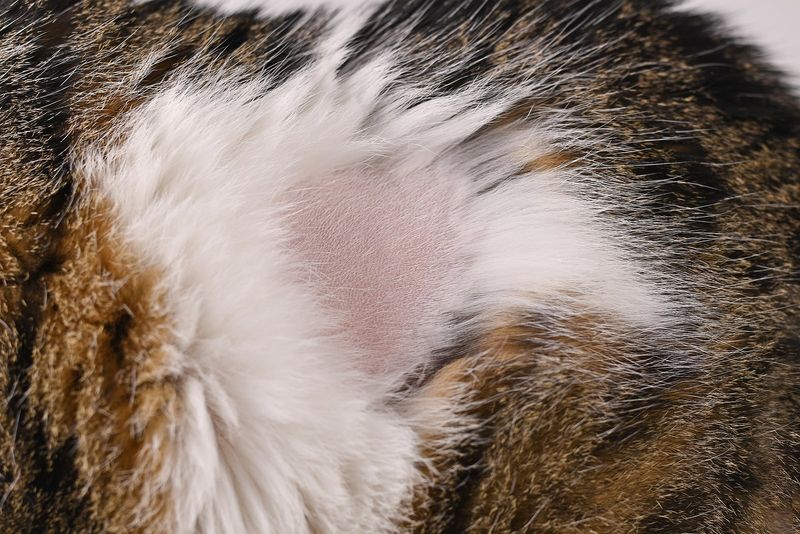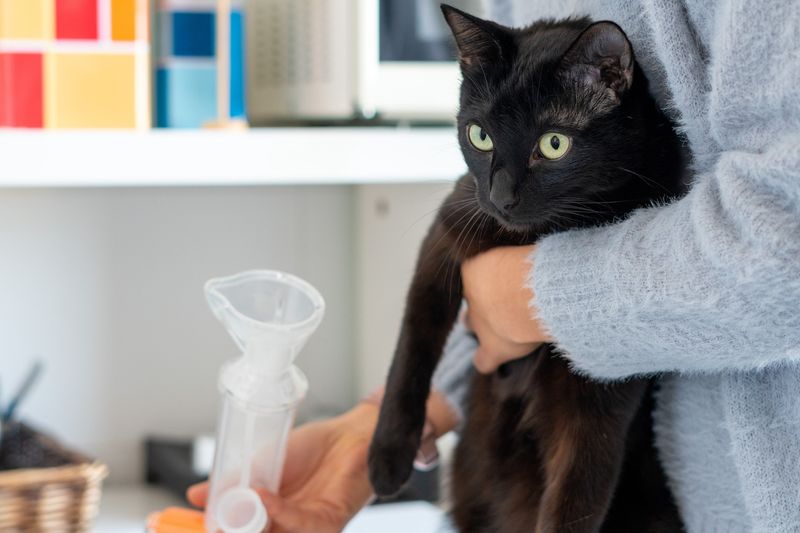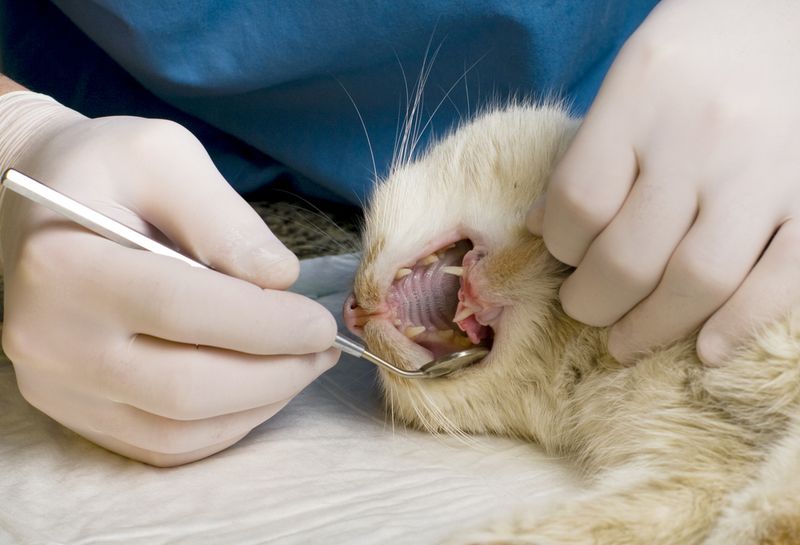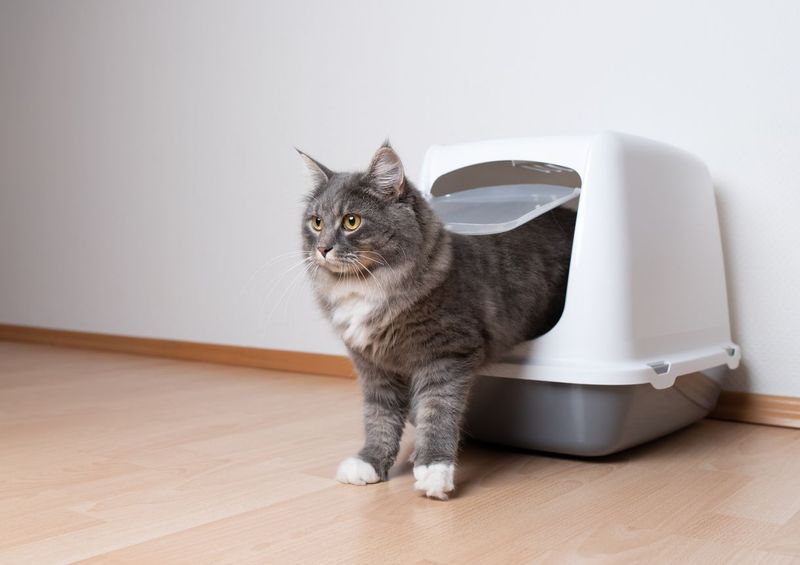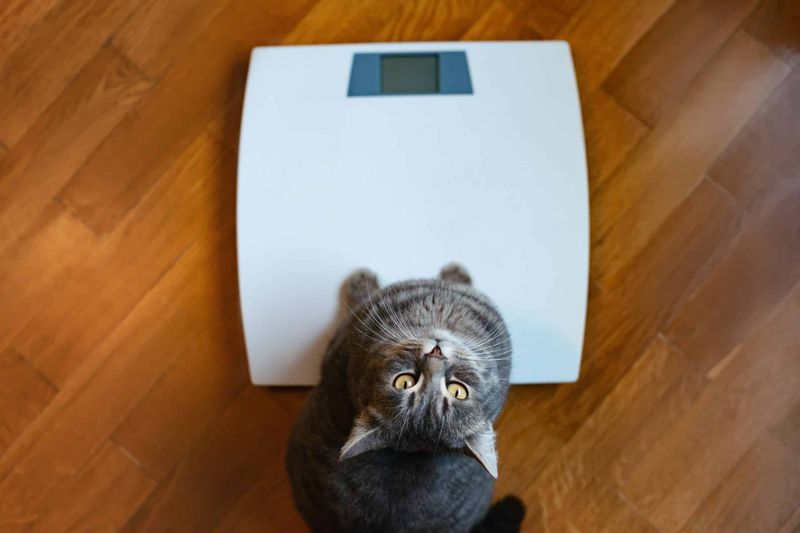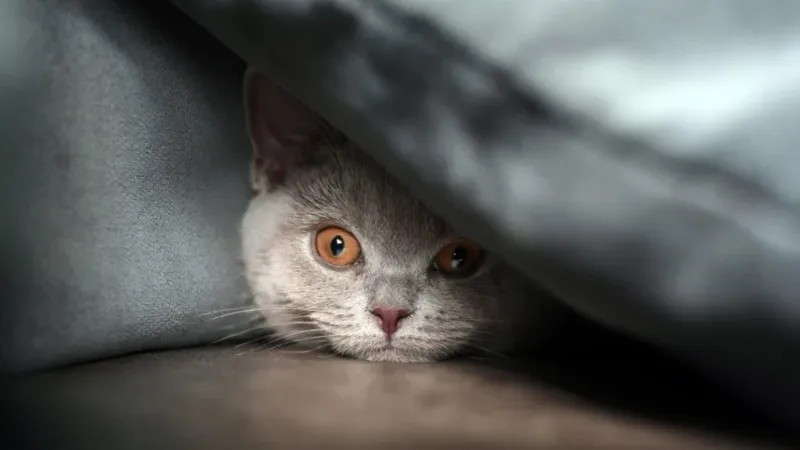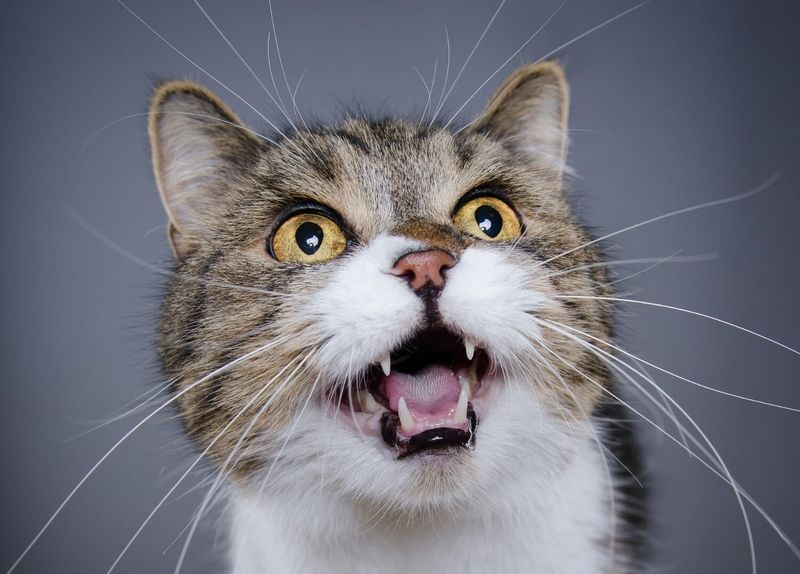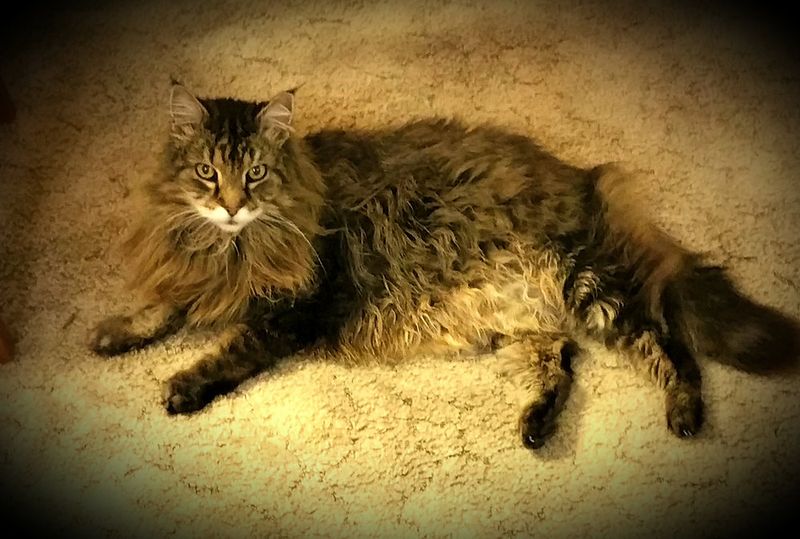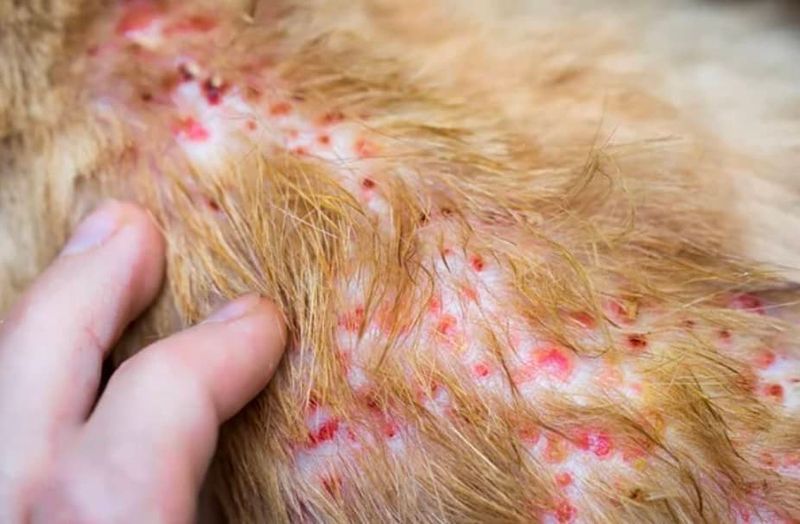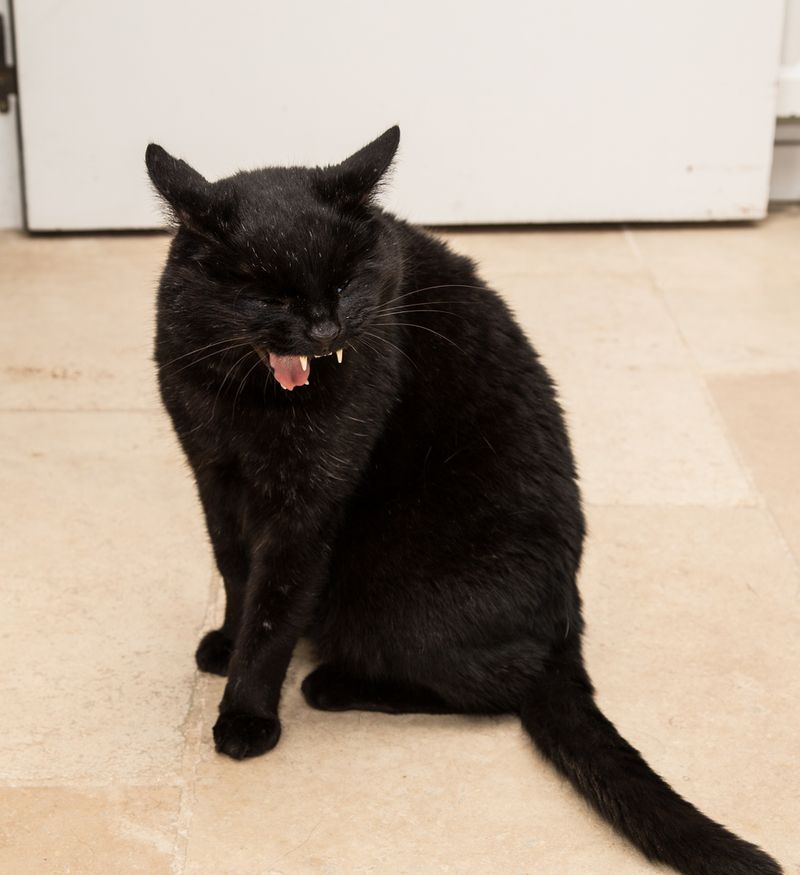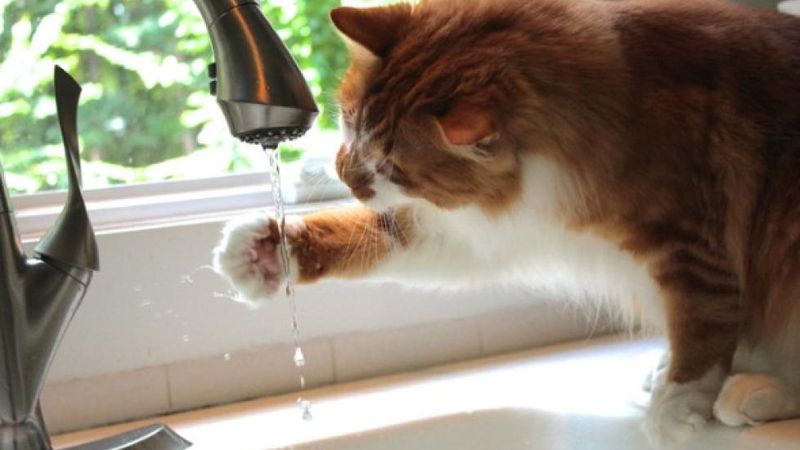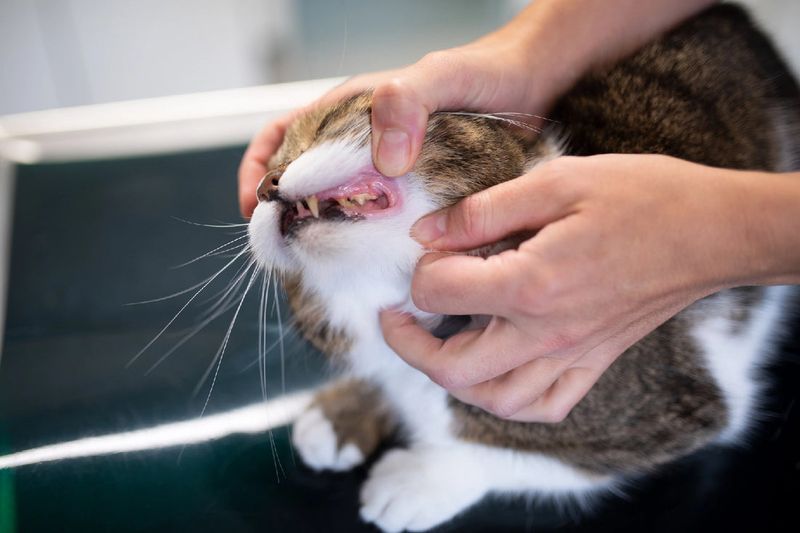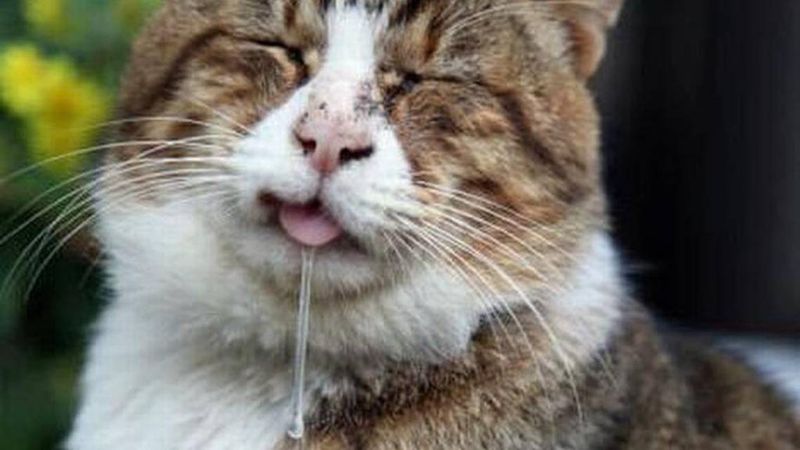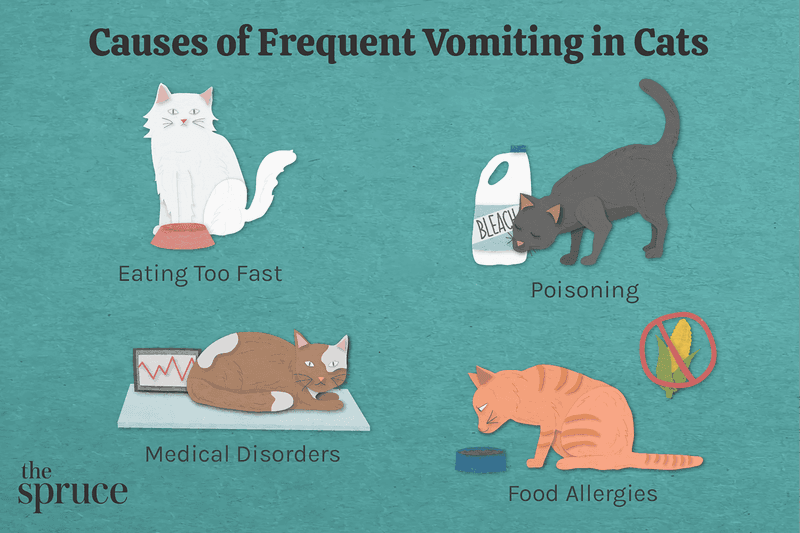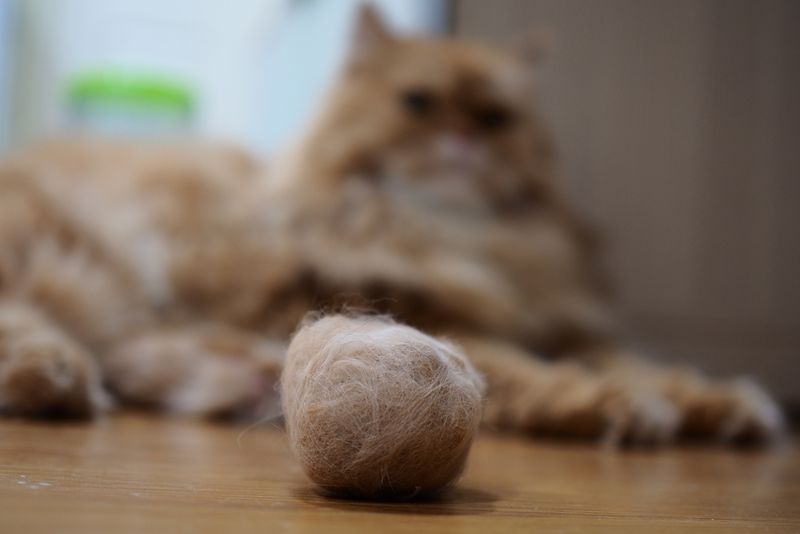📖 Table of Content:
- 1. Behavioral Changes
- 2. Coat and Skin Abnormalities
- 3. Respiratory Issues
- 4. Urinary Changes
- 5. Dental Issues
- 6. Vomiting
- 7. Diarrhea
- 8. Appetite Changes
- 9. Weight Fluctuations
- 10. Abdominal Pain
- 11. Increased Hiding
- 12. Altered Vocalization
- 13. Unkempt Coat
- 14. Skin Irritations
- 15. Coughing or Wheezing
- 16. Nasal Discharge
- 17. Increased Thirst and Urination
- 18. Difficulty Urinating
- 19. Bad Breath
- 20. Drooling
- 21. Frequent Vomiting
- 22. Hairballs
Understanding your cat’s health is crucial, as they often hide discomfort. Recognizing symptoms can help in early detection and treatment. Here’s a breakdown of common cat symptoms, categorized into those not directly related to stomach issues and those that are:
1. Behavioral Changes
A sudden change in a cat’s behavior can be an early warning sign. If your once-social feline starts hiding more than usual, it might be experiencing discomfort or anxiety. Cats often withdraw to cope with illness or pain, making behavioral changes a critical observation point. Another subtle clue is altered vocalization; a normally quiet cat may become more vocal, or vice versa. Such shifts in behavior should prompt a closer look at their overall health. It’s essential to consult your vet if these changes persist, as they can indicate underlying issues that need attention.
2. Coat and Skin Abnormalities
Your cat’s coat serves as a mirror to its health. An unkempt coat often signals grooming difficulties due to pain or illness. Cats take pride in their cleanliness, so a decline in grooming habits can be alarming. Skin irritations like redness or hair loss may suggest allergies or parasites. These changes can affect your cat’s comfort and overall well-being. Regular checks of your pet’s skin and fur can help catch these issues early. If you notice persistent problems, consulting your vet can lead to timely interventions and relief for your pet.
3. Respiratory Issues
Breathing problems in cats should never be ignored. Persistent coughing or wheezing can hint at respiratory infections or conditions like asthma. Cats with respiratory issues may also exhibit nasal discharge, which can vary from clear to colored, indicating an infection. These symptoms can significantly impact your cat’s quality of life. Observing changes in breathing patterns or any signs of respiratory discomfort warrants a visit to the veterinarian. Early intervention can prevent complications and ensure your cat remains comfortable and healthy.
4. Urinary Changes
Changes in urination habits can be key indicators of underlying health problems. Cats that suddenly drink more water and urinate frequently may be showing signs of diabetes or kidney disease. On the other hand, difficulty urinating or the presence of blood in urine could signal urinary tract infections or blockages. Such symptoms require prompt veterinary evaluation to prevent serious health risks. Monitoring your cat’s litter box habits can provide valuable insights into their health, helping catch potential issues early and ensuring timely treatment.
5. Dental Issues
Oral health is crucial for your cat’s overall well-being. Bad breath in cats often goes unnoticed but can be a sign of dental disease or other issues. Excessive drooling is another red flag, indicating oral discomfort or potential disease. Regular dental check-ups and cleanings can prevent severe health complications. It’s vital to maintain a dental care routine for your feline friend, including brushing and vet visits. If you notice any changes in your cat’s eating habits or signs of oral distress, consulting your veterinarian is essential.
6. Vomiting
Vomiting is a common issue in cats, but frequent episodes can point to gastrointestinal problems. Occasional hairballs are normal, but if your cat vomits regularly, especially food or blood, it’s time for a vet visit. Such symptoms can indicate serious health issues that require immediate attention. Keeping track of your cat’s diet and any changes in their eating habits can help identify potential triggers. Prompt veterinary care can address these issues, ensuring your cat’s digestive health remains optimal and preventing further complications.
7. Diarrhea
Diarrhea in cats can lead to dehydration and discomfort if left unchecked. Persistent diarrhea often signals infections or other digestive issues needing veterinary attention. The presence of blood in stool is particularly concerning and requires immediate action. Monitoring your cat’s litter box habits can provide early warnings of digestive health problems. Ensuring your cat stays hydrated and identifying potential dietary triggers can help manage this condition. Consulting a veterinarian ensures proper diagnosis and treatment, maintaining your cat’s health and comfort.
8. Appetite Changes
Appetite changes in cats are significant indicators of health issues. A loss of appetite might suggest nausea or other digestive concerns, while a sudden increase could point to metabolic disorders. Such fluctuations warrant attention, as they can lead to nutritional imbalances. Observing these changes helps in understanding your cat’s underlying health. Regular feeding routines and monitoring your cat’s eating patterns are crucial. If persistent changes occur, consulting a vet can provide insights into potential health problems, ensuring timely interventions and proper care.
9. Weight Fluctuations
Unexplained weight changes in cats, whether loss or gain, can be alarming. Sudden weight loss may indicate gastrointestinal diseases, while unexpected weight gain could signal metabolic disorders. These fluctuations can affect your cat’s health and energy levels. Regular weight checks and monitoring your pet’s diet and activity levels are essential for early detection of potential issues. If you notice significant changes, it’s crucial to seek veterinary advice for appropriate interventions. Maintaining a healthy weight is key to your cat’s long-term well-being.
10. Abdominal Pain
Abdominal pain in cats can be subtle yet telling. If your cat becomes sensitive to touch on the abdomen or adopts a hunched posture, it may be experiencing discomfort. These signs can indicate gastrointestinal problems or other abdominal issues that require attention. Observing your cat’s posture and reactions to touch can offer valuable clues about their health. Ensuring a comfortable environment and seeking veterinary care if symptoms persist are vital steps. Early intervention can alleviate pain and address underlying problems, maintaining your cat’s quality of life.
11. Increased Hiding
Cats are naturally curious and social creatures. When your feline friend starts hiding more frequently, it may be a sign of distress or illness. Increased hiding often indicates that your cat is feeling unwell or experiencing pain. Providing a safe and comforting space for your cat can help ease their anxiety. If this behavior persists, it’s crucial to consult a veterinarian to explore potential health issues. Understanding and addressing the root cause of this behavior ensures your cat remains happy and healthy, feeling secure in their environment.
12. Altered Vocalization
Cats communicate through vocalizations, and any sudden changes can be a sign of distress. A normally quiet cat that becomes vocal, or vice versa, may be trying to convey discomfort or anxiety. Listening to these cues is important in identifying potential health issues. Understanding your cat’s vocal patterns can help in early detection of problems. If you notice persistent changes in meowing, consulting a veterinarian is advisable. Paying attention to these signals ensures that any underlying issues are addressed promptly, keeping your cat comfortable and content.
13. Unkempt Coat
A cat’s coat is a reflection of its overall health. An unkempt, dull, or oily coat may suggest grooming difficulties due to discomfort or illness. Cats take pride in their grooming habits, and a decline in this area can indicate problems. Regular brushing and grooming checks can help maintain your cat’s coat health. If you notice persistent changes, it’s important to consult a veterinarian to rule out underlying health issues. Addressing these concerns ensures your cat remains clean and comfortable, promoting a healthier life.
14. Skin Irritations
Skin irritations in cats can cause significant discomfort. Redness, sores, or hair loss may indicate allergies, infections, or parasites. Regular checks of your cat’s skin can help catch these issues early, allowing for effective treatment. Ensuring your cat lives in a clean and safe environment can prevent many skin-related problems. If you notice persistent irritations, consulting a veterinarian is crucial for proper diagnosis and care. Addressing skin issues promptly can improve your cat’s comfort and quality of life, keeping their skin healthy and irritation-free.
15. Coughing or Wheezing
Coughing or wheezing in cats can be alarming and should not be ignored. These symptoms might indicate respiratory infections or conditions like asthma. Regular monitoring of your cat’s breathing patterns is essential in early detection of potential issues. Ensuring your cat’s environment is free from irritants can help prevent respiratory problems. If these symptoms persist, consulting a veterinarian is crucial for proper diagnosis and treatment. Addressing respiratory issues promptly ensures your cat remains comfortable and healthy, with optimal breathing function.
16. Nasal Discharge
Nasal discharge in cats can vary from clear to colored and is often a sign of respiratory infections. Observing your cat’s nose can provide clues about their respiratory health. Persistent or colored discharge warrants a vet visit to determine the underlying cause. Ensuring your cat’s environment is clean and free from allergens can prevent nasal issues. Early intervention is key to managing respiratory health, ensuring your cat remains comfortable and free from infection. Monitoring these symptoms helps maintain your cat’s quality of life.
17. Increased Thirst and Urination
Increased thirst and urination in cats can be symptoms of diabetes or kidney disease. Monitoring your cat’s water intake and litter box habits can provide early warnings of potential health issues. Such symptoms require prompt veterinary evaluation to prevent serious complications. Ensuring your cat has access to fresh water and observing any changes in their drinking patterns is essential. If you notice these signs, consulting a veterinarian can lead to timely diagnosis and treatment, maintaining your cat’s health and well-being.
18. Difficulty Urinating
Difficulty urinating, or the presence of blood in urine, is a serious concern in cats and may indicate urinary tract infections or blockages. Observing your cat’s litter box habits can provide early awareness of this issue. Such symptoms require immediate veterinary attention to prevent life-threatening conditions. Ensuring your cat has a proper diet and access to fresh water can help maintain urinary health. If you notice any signs of urinary distress, consulting a veterinarian promptly is crucial for diagnosis and appropriate care.
19. Bad Breath
Bad breath in cats is often overlooked but can be an indicator of dental disease or other health problems. Regular dental check-ups and cleanings are vital to prevent severe complications. Observing changes in your cat’s breath or eating habits can provide clues about their oral health. Maintaining a dental care routine for your cat, including brushing, helps prevent the buildup of plaque and tartar. If you notice persistent bad breath, consulting a veterinarian is essential for diagnosis and treatment, ensuring your cat’s oral health is maintained.
20. Drooling
Excessive drooling in cats can signify oral discomfort or dental disease. Regular dental care, including check-ups and cleanings, is crucial for maintaining your cat’s oral health. Observing changes in drooling patterns or eating habits can provide insights into potential issues. Maintaining a routine of brushing and dental hygiene can prevent serious health complications. If you notice persistent drooling, consulting a veterinarian is essential to identify the underlying cause and ensure proper treatment. Addressing these issues promptly keeps your cat comfortable and healthy.
21. Frequent Vomiting
Frequent vomiting in cats can be a sign of serious gastrointestinal issues. While occasional hairballs are typical, regular vomiting needs veterinary assessment. Keeping a record of your cat’s diet and any changes in their eating habits can help identify triggers. Quick veterinary intervention can address these problems, ensuring your cat’s digestive health is maintained. Observing these symptoms and acting promptly prevents complications, keeping your cat happy and healthy. Consulting a vet for persistent vomiting ensures proper care and treatment, maintaining optimal health.
22. Hairballs
Hairballs are a common occurrence in cats, but frequent or problematic hairballs may suggest underlying digestive issues. Regular grooming can minimize hairball formation by reducing the amount of hair your cat ingests. Monitoring your cat’s grooming habits and any changes in their behavior can provide insights into their digestive health. Ensuring your cat’s diet supports healthy digestion is crucial. If hairballs become a frequent issue, consulting a veterinarian can provide guidance on managing the problem and ensuring your cat’s well-being.


